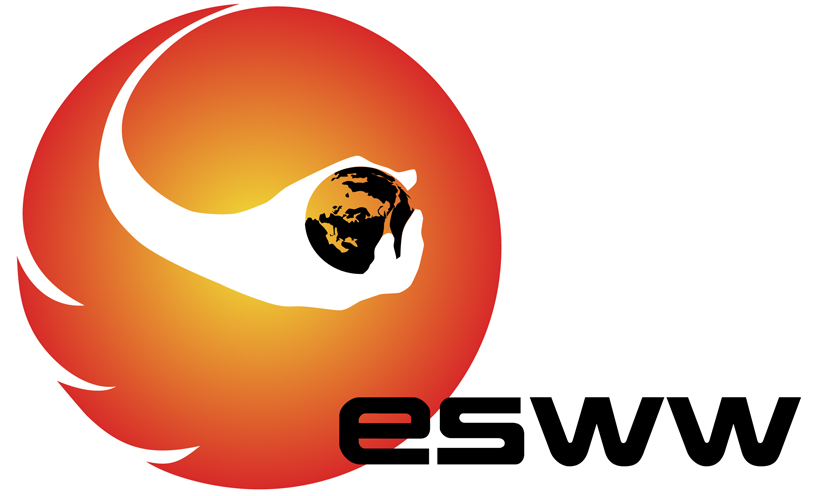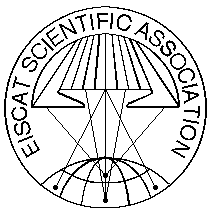
November 5 - 9, 2012, Brussels, Belgium
COST ES0803 Final Results
| Session: | Session 5 COST ES0803 Final Results |
| Date: | Friday 9 November 2012 |
| Chair: | A. Belehaki (NOA) & M. Messerotti (INAF) |
| Remarks: |
10:40-10:55 Splinter wrap up
10:55-11:30 Coffee Break & Poster Session 12:50-13:05 Closing |
| Time | Title | ||
| 09:00 |
Advanced methods to model and predict space weather effects - Summary of Progress
Watermann, J. jfwConsult, BELGIUM According to the MoU of the COST Action ES0803 "Developing space weather products and services in Europe", Working Group 1 concentrated on "Advanced methods to model and predict space weather effects". The work was performed in four subgroups, each emphasising a specific domain: - SG 1.1: Progress in scientific understanding of space weather - SG 1.2: Performance of available research and operational models - SG 1.3: Improvement of operational models - SG 1.4: Codes for new space weather products and services Most COST ES0803 participants are scientists, consequently WG1 - and within it SG1.1 - attracted the interest of the majority of the participants. Considering that COST only funds coordination and networking not all potential space weather themes were addressed, only those to which participants contributed using support from other sources of funding. Areas covered in WG1 included - Sources of solar activity - Solar wind perturbations and solar energetic particles - Solar wind - geospace coupling - Space radiation in the Earth environment - Geomagnetic activity and geomagnetic indices - Monitoring, modeling, nowcasting and forecasting the state of the ionosphere - Ionospheric electrodynamics and plasma transport in the upper atmosphere - Ground effects of space weather - Advances in numerical modeling and coding - Performance of space weather models Most contributions to WG1 addressed research on the scientific basis of space weather, but a considerable amount of work was performed in other areas such as performance evaluation of space weather models and improvements of operational models for space weather nowcast and forecast purposes. Addressed in this talk will be a selection of achievements from a subset of domains: solar wind disturbances and their interaction with the Earth environment and ground effects of space weather. The following topics will be dealt with in companion talks and are not considered here: solar activity and its evolution across the solar corona, monitoring, modeling, nowcasting and forecasting the state of the ionosphere using radio methods, space weather effects on the polar cap ionosphere, performance evaluation and validation of space weather models, space weather models in an operational environment. |
||
| 09:20 |
Solar activity and its evolution across the corona
Zuccarello, F. Università di Catania, ITALY Solar magnetism is responsible for many activity phenomena occurring in the solar atmosphere. The consequences of these phenomena on the solar-terrestrial environment and on Space Weather are nowadays clearly recognized, even if not yet fully understood. In order to shed light on the mechanisms that are at the basis of the Space Weather, it is necessary to investigate the sequence of phenomena, starting in the solar atmosphere and developing across the outer layers of the Sun and along the path from the Sun to the Earth. This goal can be reached by a combined multidisciplinary, multi-instrument, multi-wavelength study of these phenomena, starting from the very first manifestation of solar active region formation and evolution, to the analysis of explosive phenomena (i.e., flares, erupting prominences, coronal mass ejections), till the study of the interaction of plasma magnetized clouds expelled from the Sun with the interplanetary magnetic field and medium. The state of the art of our comprehension of these phenomena is briefly reviewed, focusing on the results obtained during the COST Action ES0803. |
||
| 09:40 |
Solar activity impact on the Earth’s upper atmosphere
Kutiev, I. National Institute of Geophysics, Geodesy and Geography, Bulgarian Academy of Sciences, BULGARIA A number of studies have been conducted in the frame of subgroup (SG)1.1 of COST ES0803 devoted to the solar activity impact on the Earth's upper atmosphere. Response of the thermosphere and ionosphere to the changes of solar activity is important part of the space weather issue, because of its impact on the human space-based activity. The studies cover wide range of contemporary topics identified in the Action's scientific program. The methods described here are based on data-driven analysis. Specific databases are used for spectrum analysis, empirical modeling, electron density profile reconstruction and forecasting techniques. The results of the studies can be grouped in three major topics. One is the response of the ionosphere to the periodic changes of solar activity with time scale from several days to a month (medium-term response) and those with time scale of order of several solar cycles. The second group of topics covers studies on the ionospheric response to geomagnetic storms, which have time scale from several hours to 2-3 days. Third group contains development of empirical models and forecasting techniques, which are aimed to feed the space weather operational services. |
||
| 10:00 |
Space Weather Challenges of the polar cap Ionosphere
Moen, Joran1; Oksavik, Kjellmar2; Alfonsi, Lucilla3; Barthémely, Mathieu4; Daabakk, Yvonne5; Lilensten, Jean4; Romano, Vincenzo3; Spogli, Luca3 1University of Oslo, NORWAY; 2Department of Physics and Technology, University of Bergen, NORWAY; 3Istituto Nazionale di Geofisica e Vulcanologia, ITALY; 4LPG, CNRS and Joseph Fourier University, FRANCE; 5Department of Physics, University of Oslo, NORWAY We present a review of research on polar cap ionosphere space weather conducted during the COST action ES0803. The main part of the work has been directed towards the study of plasma instabilities and scintillations in association with cusp flow channels and polar cap patches, which is considered as critical knowledge in order to develop forecast models for scintillations in the polar cap. We have conducted these studies by multi-instrument techniques comprising the EISCAT Svalbard Radar, SuperDARN radars, in-situ rocket measurements, and GPS scintillation measurements. The cusp ionosphere is a hot region in scintillation climatology maps. Scintillations in the cusp and the polar cap ionosphere are due to multi-scale structures in the electron plasma. The ionosphere is associated with filamentary precipitation giving rise to km scale gradients onto which the gradient drift instability can operate very efficiently. The cusp is also associated with strong flow shears ideal for the Kelvin-Helmholtz instability process, meaning that in the cusp there are two generic instability processes that can operate simultaneously. For IMF Bz negative conditions, high density solar EUV ionized plasma produced at subauroral latitudes enters the polar cap in the form of polar cap patches near the cusp inflow region. The polar cap patches are subject to the gradient drift instability as they convect across the polar cap, exit the night time polar cap, and enter the auroral oval. We have demonstrated that the SuperDARN convection model can be used to track these patches backwards and forward in time. Hence, once a patch has been detected in the cusp inflow region, SuperDARN can be used to forecast its destination in the future. We have also explored the potential of using the polarization rate of the red oxygen line as an additional space weather parameter. Polarization can possibly be used as a proxy for the neutral atmospheric density and particle precipitation as the depolarization rate is controlled by atmospheric conditions and altitude of emission. However, a main concern for the practical use of polarization measurements in space weather monitoring is the extraordinary high requirement for clean measurements or for a thorough monitoring of the light pollution. |
||
| 10:20 |
Verification of space weather models
Wintoft , P.; Buresova, D.; Bushell, A.; Hejda, P.; Innocenti, M.E.; Lapenta, G.; Nunez, M.; Perrone, L.; Qahwaji, R.; Thomson, A.; Tsagouri, I.; Valach, F.; Viljanen, A. IRF, SWEDEN Working group 1.2 of COST Action ES0803 addressed the problem of verification of space weather models. For this purpose a survey of current space weather model verification were carried out, with focus on models and algorithms developed by institutes participating in COST Action ES 0803. Many different approaches exist although a small collection of measures are most often used. We describe verification approaches taken both from the meteorological and space weather communities. The most common approach is to use one, or a few, metrics to verify the models. It is recommended that the more advanced approaches, like the distributions oriented, used in meteorology are also used for the space weather model verification. |
||
| 11:30 |
Progress in space weather modeling in an operational environment
Tsagouri, I. National Observatory of Athens, GREECE This contribution aims to review latest advances in space weather modeling in an operational environment in Europe including both the introduction of new models and the improvements to existing codes and algorithms that address the broad range of space weather’s prediction requirements from the Sun to the Earth. Each case is addressed by considering the input data, the output parameters, products or services, its operational status and whether it is supported by validation results, aiming to provide a solid basis for future developments. This work is the output from the Sub Group 1.3'Improvement of operational models ' of the COST ES0803 action and the emphasis is given on the progress achieved by European research teams involved in COST ES0803. |
||
| 11:50 |
Recommendations for space weather products and services in Europe
Van der Linden, R.1; Hapgood , M.2; Heynderickx , D.3; Stanislawska , I.4; Belehaki , A.5; Messerotti , M.6 1Royal Observatory of Belgium, - Not specified -; 2RAL, UNITED KINGDOM; 3DHC, BELGIUM; 4SRC, PAC, POLAND; 5NOA, GREECE; 6INAF, ITALY This presentation summarises the results of a key activity implemented in the frames of the Working Group 2 of the COST Action ES0803. Main outcome concern the identification of space weather services in Europe, the specification of the users’ requirements for different domains affected by space weather and recommendations for space weather products and services that can support further the needs of the users. Recommended space weather products are mainly based on specific operational programmes that have been developed recently by the European researchers. Finally, some conclusions are presented regarding the future perspectives of space weather advances in Europe. |
||
| 12:10 |
Where communication and space weather meet
Vanlommel, Petra Solar-Terrestiral Centre of Excellence-STCE, BELGIUM Research, including observations, instrumentation and product development are the goals of scientists working in the field of space weather. A publication in a refereed journal about this research and development is a justification and validation of the work performed. However, these results should go beyond a publication and beyond the scientific community. Dissemination, exploitation and education of space weather science provide the tools to make this extra step. Also, space weather projects and the space weather community in general have been putting a larger emphasis on this the last few years. We will present the communication efforts done in the frame of the COST action 'Developing Space Weather Products and Services in Europe'. |
||
| 12:30 |
"Networking for space weather outreach activities: the Planeterrella example"
Lilensten, Jean1; Barthélémy, M.1; Simon, C.1; Gronoff, G.2 1Institut de Planétologie et d'Astrophysique de Grenoble (IPAG), FRANCE; 2Institut de Planétologie et d'Astrophysique de Grenoble (IPAG), - Not specified - The planeterrella is an auroral simulator conceived for space weather outreach activities. It was created in France in 2007 and gradually improved. Several copies exist in different countries, which allowed about 50,000 people to picture auroras in Europe. More copies are under way. The spreading of this experiment is mainly based on the scientific network created through COST or other European instruments. In this lecture, I will present the experiment, and discuss the pros and cons of its economic model: small versus big, automated versus operated, patent versus gentleman agreement, centralized diffusion versus networking, owned experiment versus shared knowledge. |
||
|
|






